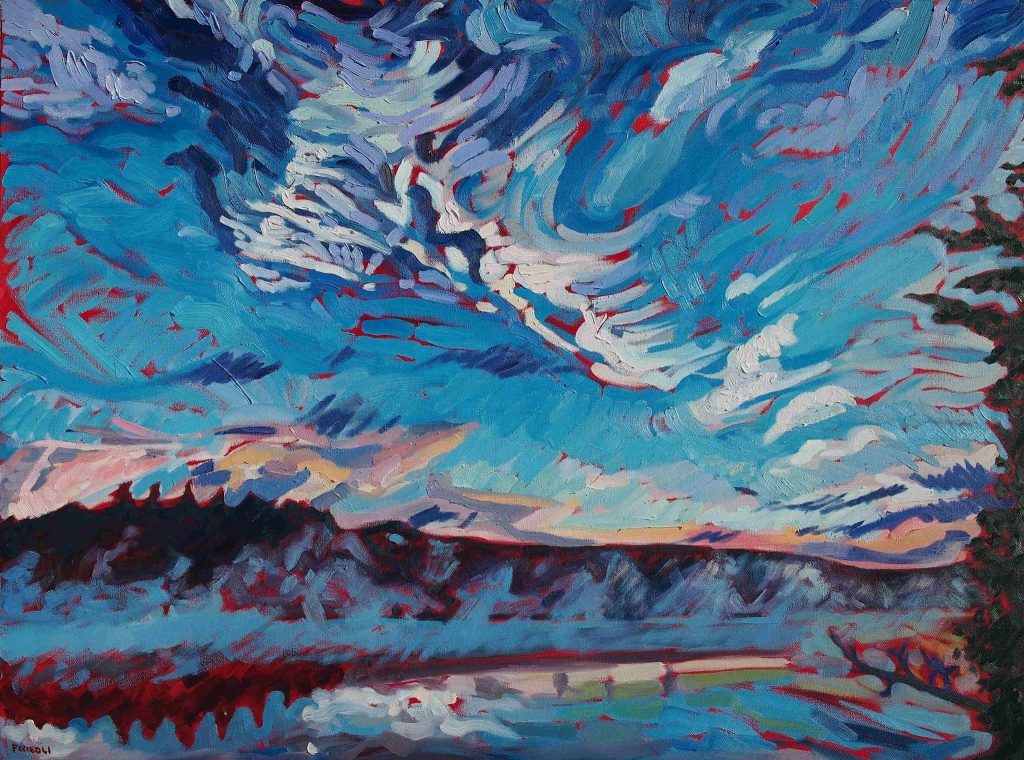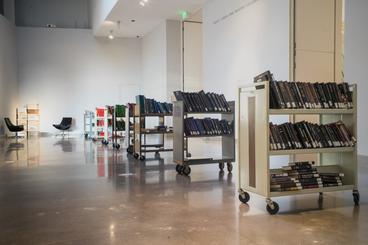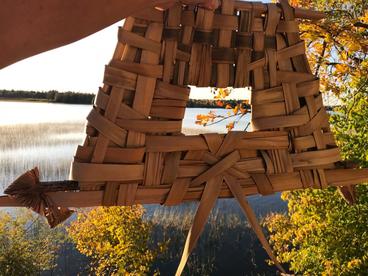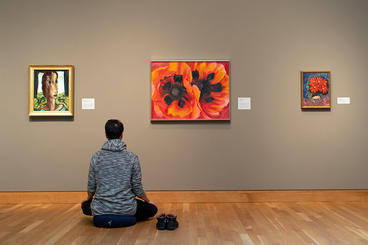Playwright, poet, and writer Marcie Rendon (Anishinaabe, White Earth Nation) has been in residence at the Target Studio since Fall 2019. She is a community arts activist and a curator who supports other Native artists/writers/creators to pursue their art. In her work with WAM, Marcie researchers the causes and effects of the disproportionate rates of incarceration of Native American women in Minnesota, and develops a performance and an exhibit to be presented in September 2020.
A Nation is not conquered until the hearts of the women are on the ground. Then it is done. No matter how brave its warriors or strong its weapons.
—A Cheyenne Proverb
Historically on this continent, native people did not have a sense of ownership of children, life partner or the idea that ‘independence’ was a virtue. Life revolved around the physical and emotional sustenance of ‘the people’ which relied on one’s interdependence with the whole. One’s identity was based in the extended familial structures to which one belonged. Each person had a role in the larger context based on clan structure, or one’s dream interpretation and adherence to messages from the dream realm, or the larger ‘band of people’ to whom one was one with. There were no prisons, jails, orphanages, old people’s homes; none of the institutions that warehouse people in the current day. Institutions that force acculturation, assimilation, adherence to a pre-ordained ‘protestant-based, moral and value-based, non-native agenda’.
One has to understand the historical context of continual attempted annihilation of Native people on this continent to grasp the underlying intention of the high rate of incarceration of Native women today. The clan system for the Ojibwe people is centuries old; it existed prior to what we call ‘the great migration.’ We have seven clans. You are never to have children with someone from the same clan as you. If you are bear clan, you do not procreate with other bear clan. It doesn’t even matter if you are not genetically related; say that you are Ojibwe bear clan and you connect with someone who is Navajo and bear, can’t do it – you just can’t do it. That is how strong these clan systems once were. Among the Lakota people, they have a different system. They have ‘tiyospaye’. This is a family system of knowing who you are related to. There are strict protocols within a tiyospaye. There can be great shame, even today, if these protocols are knowingly broken.
This is just two tribes. Each tribe had similar systems in place. The Navajo a whole other system. The Mohawk another. These systems were so entrenched in the people that prior to contact our people had a way of life that worked well – there was an understanding of how to BE Anishinaabe, how be BE Lakota – we didn’t need a police force, jails, prisons. An outside regulating agency of how to be human. In the Lewis and Clark journal they write that they court marshalled one of their crew with something like 70 lashes. There was a group of Mandan men standing off to the side crying and comforting each other. Lewis sent the interpreter over to ask why they were crying. They responded by saying they had never witnessed another human being treated so badly. They were crying for the man’s spirit and the pain he must be feeling.
There was an economic basis for the destruction of the clan system also. Within the clan system a member could not hunt or eat the animal of their clan. For example, in the 1800s the Hudson Bay company wanted as many people as possible to hunt and trap furs for them. It was in HB’s best interest to destroy the clan system. So, it was systematically planned for the clan system knowledge to be disrupted through the boarding school system and the introduction of alcohol. With this level of disruption of the clan system, there were no safeguards (clan system and a larger community that tracks itself) when our people were then moved to reservations and isolated.
After the wars against us, along came Christianity and boarding schools. Our children were taken out of the home, out of the existing tribal clan structures and family institutions that honored children, protected them; and where children were loved, cherished and raised by a large extended clan family. They were taken and raised by strangers who were not parents. These were people who were assigned to control, manage, discipline and ‘take the heathen’ out of the children. Children were exposed to horrific abuse. Although everyone was aware it was happening, it was done in ‘secret’. People were not allowed to talk about it; the adults did not admit it was happening. Children were separated from siblings. Children were not allowed to talk to each other from their family or tribe. They could not speak their native language, so communication was cut off. Even if they wanted to talk about what happened to them, they most likely did not have the words for the experience of what happened to them – in their own language or in the imposed language. Children witnessed horrific abuse without any adult to explain what was happening, give them information, or process anything that was happening to them or the other children around them.
These children, after years of abuse, were then sent home. We know now that they had to be suffering from PTSD, depression, touch deprivation, dissociation-in addition to untold other emotional and physical distresses. On return many had lost knowledge of their language, so they did not know how to communicate with their parents, aunts, uncles, grandparents who they returned home to. They returned to families deep in grief and depression because their children were taken from them and they were powerless to stop it – or they felt they were to blame for somehow agreeing with sending the children off. Because they had been separated from their siblings-who in the clan system includes biological and clan cousins-sometimes they returned home without the ability to recognize, actually recognize people whom they were related to. They probably did not have a language to explain what they had endured. Their trauma bond was with the other children who had experienced what they had experienced.
The clan systems was almost effectively destroyed. There were generations who were raised in boarding schools who never learned who their clan was, and what their roles were in the community- Advisors, medicine people, protectors, hunters, teachers, storytellers. In one generation these clan systems were almost obliterated. People returned home without the community mores and standards in place which previously had regulated all tribal life. Instead, new governmental tribal agencies had been put in charge on the reservations and the social mores of the community were under the auspices of the churches.
This level of abuse, which was experienced by whole families, whole communities, whole swaths of Native people – in institutions where it was ‘normalized’ AND made secret AND made to be the ‘sin’ of the victim - meant that people returned home without the words, or the knowledge, or systems in place to help them recover from what had happened to them and those around them. Many had also learned a new ‘normal’.
Within the Christian institutions and belief systems tribal peoples were indoctrinated into the shame-based identity of themselves. Many of our people tried valiantly to maintain the traditional ways-but it must also be remembered that we were forbidden by law to practice our ceremonies. There was always the threat not only of incarceration for spiritual activity but also mental institutionalization for practicing of traditional ceremonies. So, even if we had systems of healing in place we weren’t allowed to use them.In the face of war, forced removal to boarding schools and then forced removal of children into foster/adoptive care, our children continued to come home. To seek solace, comfort, health and healing from the women of the community.
In the 1960s and 70s, there were high incarceration rates of Native American men across the continent. As communities and tribes were robbed of the presence of the men, the women stepped into those leadership roles. Since the 1970-80s our women have dominated in the leadership roles of our communities and tribes in the forced absence of our men. Now we arrive at the 21st century. The incarceration rates of Native American women have soared. Where Native people in the state of Minnesota are 1.1% of the entire population, on any given day the population of Native women at Shakopee women’s prison fluctuates between 18% up towards 25%.
Why? The women are the backbone and heart of our people. They carry the future generations, the stories and dreams of our people. These are the spiritual and emotional stakes. And then there are the economics of incarceration as big business.
This project explores these questions and more.
Marcie Rendon, Target Studio Artist-in-Residence



